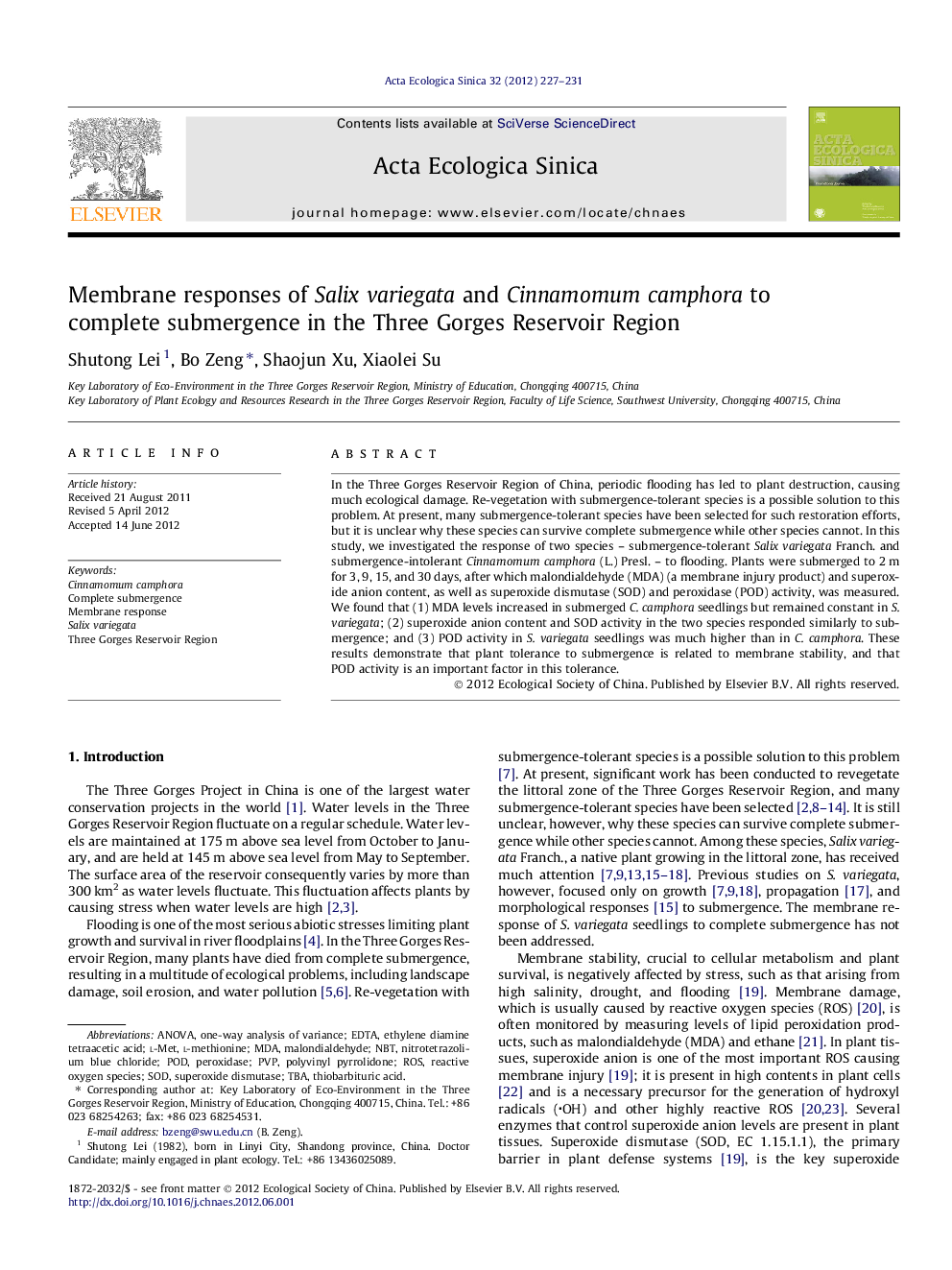| Article ID | Journal | Published Year | Pages | File Type |
|---|---|---|---|---|
| 4380044 | Acta Ecologica Sinica | 2012 | 5 Pages |
In the Three Gorges Reservoir Region of China, periodic flooding has led to plant destruction, causing much ecological damage. Re-vegetation with submergence-tolerant species is a possible solution to this problem. At present, many submergence-tolerant species have been selected for such restoration efforts, but it is unclear why these species can survive complete submergence while other species cannot. In this study, we investigated the response of two species – submergence-tolerant Salix variegata Franch. and submergence-intolerant Cinnamomum camphora (L.) Presl. – to flooding. Plants were submerged to 2 m for 3, 9, 15, and 30 days, after which malondialdehyde (MDA) (a membrane injury product) and superoxide anion content, as well as superoxide dismutase (SOD) and peroxidase (POD) activity, was measured. We found that (1) MDA levels increased in submerged C. camphora seedlings but remained constant in S. variegata; (2) superoxide anion content and SOD activity in the two species responded similarly to submergence; and (3) POD activity in S. variegata seedlings was much higher than in C. camphora. These results demonstrate that plant tolerance to submergence is related to membrane stability, and that POD activity is an important factor in this tolerance.
